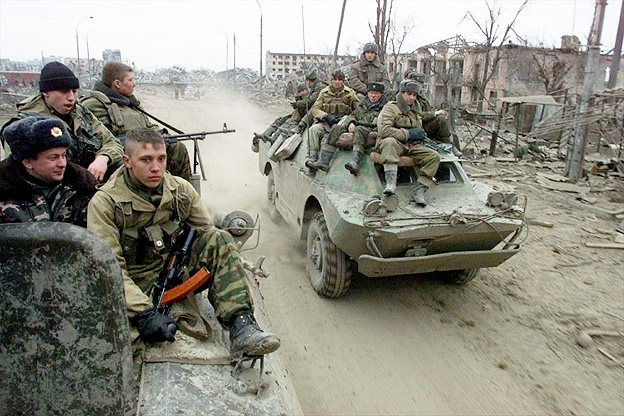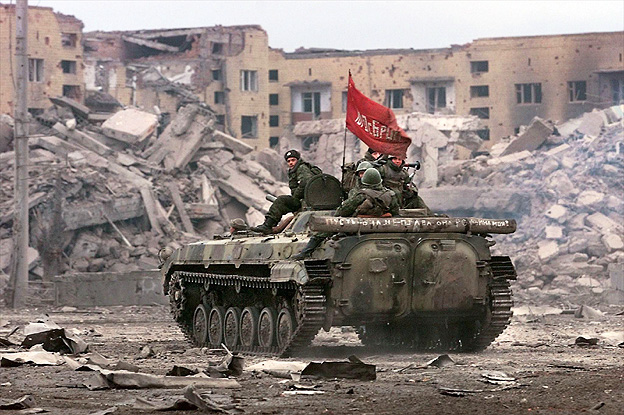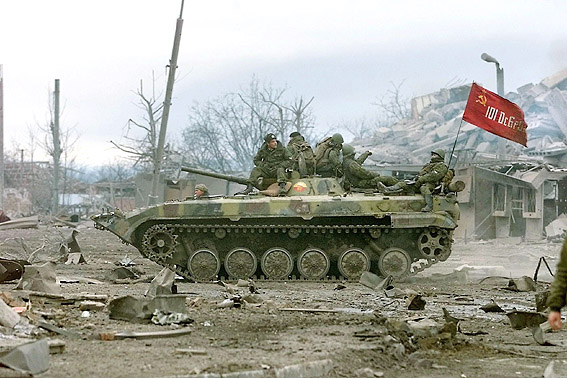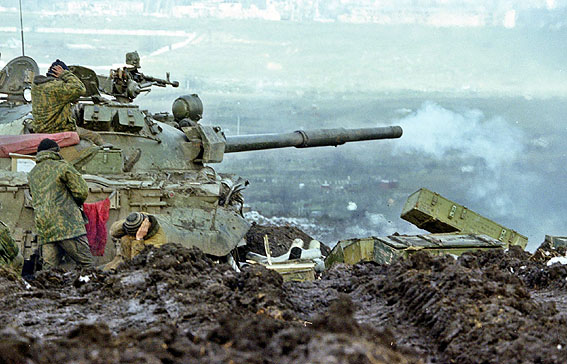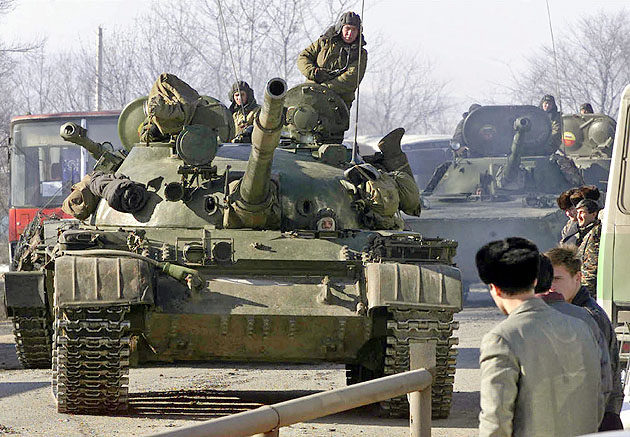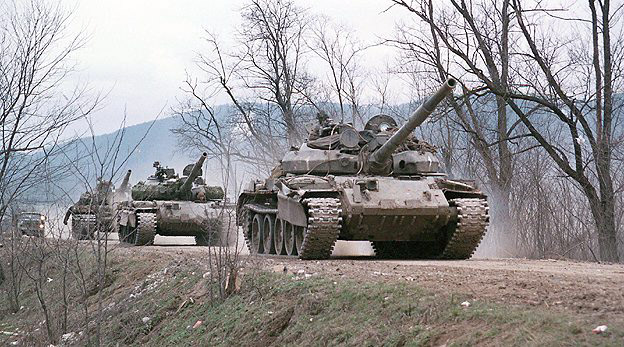Amigo Cancio
La foto que indicas,donde citas que es un SAM SA-19 Grison,pese a tener razon,ya que es el sistema SAM que emplea,su definición mas correcta es 2S6M Tunguska (2K22M Tunguska-M) que entro en servicio en Rusia a finales de los años 90.
Dicho complejo,el reemplazo natural de los Shilka,es considerado uno,sino el mejor sistema integrado de Defensa Aérea a Baja altitud,destinado a la protección de la Infantería Motorizada y Tropas mecanizadas contra objetivos tipo aviones o helicópteros.

Tunguska-M1
El Tunguska-M1 es una variante mejorada respecto al sistema original especialmente a lo que respecta a los sistemas de control,guiado y prestaciones del misil
El armamento que porta son 8 SA-19 Grison(9M311-M1),un misil(de 40Kg) encargado de neutralizar objetivos a velocidades máximas de 900m/sg entre distancias de 15 a 6,000m para objetivos terrestres o de 15 a 10,000m contra objetivos aéreos armado con una cabeza de combate de 15Kg.
Esto esta determinado a un sistema de control de tiro,basado en un Radar de Adquisición de Objetivos y de otro Radar de Seguimiento(Sistemas HotShot),aparte de sistemas de vision optico,sistema de computadora digital,equipo de navegación...,en lineas generales tiene un tiempo de respuesta muy elevado de 8-12sg
El alcance de detección de radar es de 19Km y de seguimiento/adquisición de 16Km.
Esto se complementa con un 2 Cañones Dobles 2A38M de 30mm con una cadencia de tiro de 5,000dpm, alcance máximos de 3Km contra objetivos aéreos y de 4Km contra terrestres,puede emplear munición AP-T, Frag-T, HE-I ,con una capacidad de maniobra y elevación de –17º a +87º .
El Tunguska-M1 se monta en un chasis de 34Tn,tripulado por 4 hombres.
Una Batería Tunguska-M1 esta compuesto de hasta 6 vehículos que también incluye un vehículo cargador además de instalaciones de mantenimiento y entrenamiento.

Misil 9M311-M1
Las brillantes prestaciones del complejo Tunguska lo limita su precio que lo hacen prohibitivo para determinadas economías lo que ha impedido una alta proliferación en la exportacion.
Por ello,digamos que surgio una medida intermedia para reducir el coste y simplificarlo y hacerlo,digamos un poco mas accesible y competitivo.
Hablaríamos del sistema Pantsyr S1,un sistema de Defensa Aerea Cerrada,diseñado para la Protección de Instalaciones terrestres contra una variedad de ataques,ya fueran aviones,helicópteros ,misiles de crucero o balisticos,municion guiada de precision o UAV. Incluso tambien podria encargarse de objetivos terrestres ligeramente armados,como podemos ver,hablaríamos de funciones diferentes frente al Tunguska.
El Panstyr esta armado con 12 misiles 57E6,que rinde a velocidades máximas de 1.1Km/sg y alcances de entre 1Km a 12Km,armado con una Cabeza de Combate FFRAG de 16Kg.
Se complementa con 2 cañones 2A72 de 30mm,con 750 cartuchos de la mas diversa municion ya sea HE,FRAG,Trazadora FRAG,Perforante..siendo seleccionada dependiendo la naturaleza del objetivo. Su cadencia alcanza los 700dpm y su alcance hasta los 4Km.

Misil 57E6

Sistema Pantsyr S1,montado sobre el chasis de un Camion Ural-5323 8x8 de 10Tn .
El Vehículo aglutina todo el sistema de control y lanzamiento
El Sistema de Control,incluye un Radar de Adquisición y otro de seguimiento en dual que opera en ondas de banda milimétricas y centimetricas.
El alcance de detección es de 30Km y de seguimiento de 24Km para objetivos de 2-3cm2.
Aparte del radar,tambien se equipa con canales electro-opticos con monitores termales y telemetros laser,incluyendo un procesador de señales digitales y seguimiento automatico de objetivos.
Tambien se ha desarrollado una versión de bajo coste del Pantsyr-S1 para la exportacion,que solo integra un sistema de control de tiro electro-optico.
Los 2 canales de guiado independientes (Radar y Optico) permite un ataque a 2 objetivos simultáneamente de 12 objetivos adquiridos por minuto.

Sistema de Control
Unos datos adicionales del sistema Hot Shot que equipa los Tunguska.
The SA-19 is supported by the HOT SHOT radar system, which consists of a surveillance radar with a maximum range of 18 km, and a tracking radar with a maximum range of 13 km. The semi-automatic radar to command line-of-sight engagement requires the gunner to track the target using the roof-mounted stabilized optical sight.
The integrated fire-control system of the 2S6M incorporates the following components:
Target acquisition radar (TAR) (1RL144), operating in the E-band, with a max. range of 20 km.
Target tracking radar (TTR) (1RL144M), operating in the J-band, with a max. range of 18 km.
IFF system (1RL138), operating in C-and D-band.
Direct-view Optics (DVO).
Fire-control computer.
The Target acquisition radar (TAR) (1RL144) antenna is mounted at the rear of the turret and is folded down when not in use. This radar provides primary search capability in addition to measurement of range and bearing. This radar can detect targets out to maximum range of approximately 20 km. It is a coherent system that has sufficient accuracy to permit its use as a range back up for fire-control purposes. The TAR emits a fan beam covering 4.50 in azimuth and 150 in elevation. The beam is pointed at a constant elevation of 7.50 to permit detection of low-altitude targets. The antenna rotates at approximately 1 r/s, which gives a rapid update of the airspace around the 2S6M. The choice of a frequency in the E-band for the TAR is an advantage since there is low attenuation in inclement weather (rain, snow, and fog) at this frequency and therefore the acquisition radar is not degraded in such conditions.
The Target tracking radar (TTR) (1RL144M) antenna is mounted at the front section of the turret and has two fundamental functions that depend on whether the guns or missiles are selected. The tracking radar constantly relays target range, elevation and bearing to the fire-control computer, and on the basis if these data the computer generated the laying commands for the weapon system. A stabilized optical sight is used as a back up tracking channel, allowing target data to be relayed to the fire-control computer. This sight is also used to calculate the deviation of a missile's flight path from the line-of-sight, these data being automatically relayed to the fire control computer and used to generate correction signals. During a gun engagement, the TTR functions as an automatic target tracker, feeding target position data to the fire-control computer. During missile engagement, the tracking radar locks onto the target and then lays the optical sight on the target. Subsequently the gunner assumes the target-tracking function with the electro-optic sight, and the radar is used for relaying guidance commands to the SA-19 missile. The tracking radar emits pulse-position-modulated codes for missile guidance. The TTR is a two-channel monopulse design featuring an MTI processor and a digital range-tracking system. The tracking radar is generally cued with coarse range and angle data from the TAR. Alternatively, the targeting information can be passed by means of the command and control network.
Un saludo





